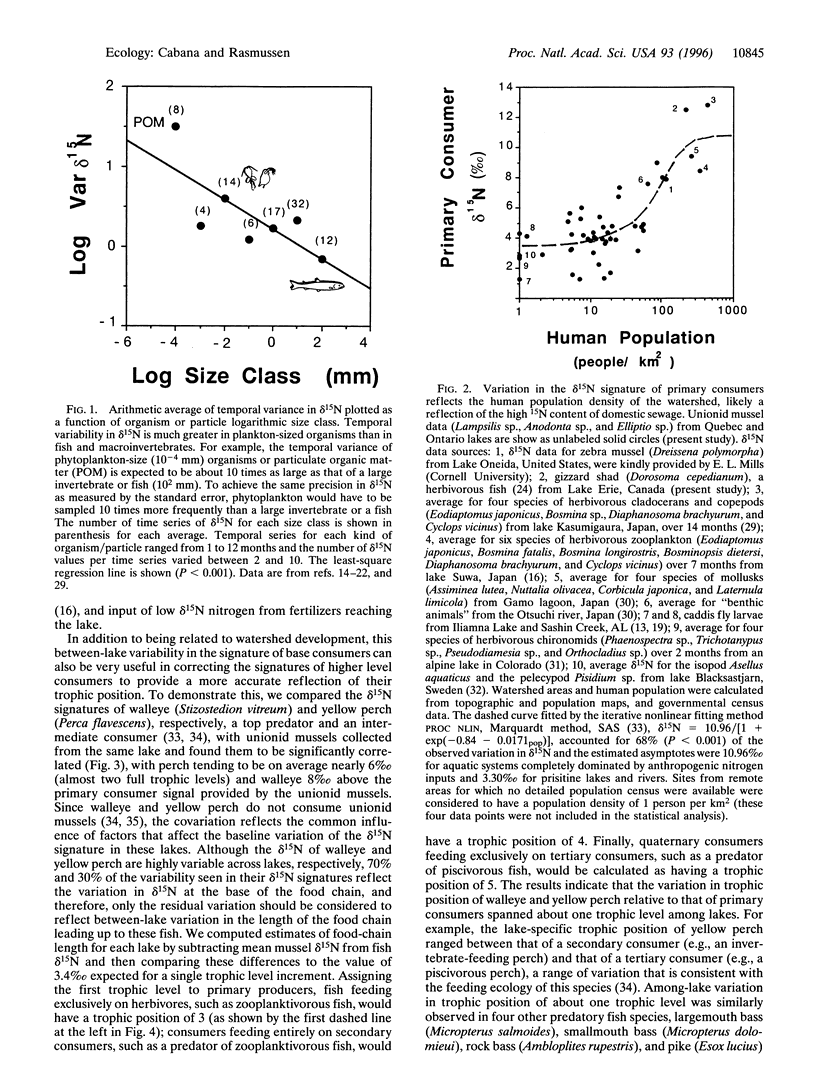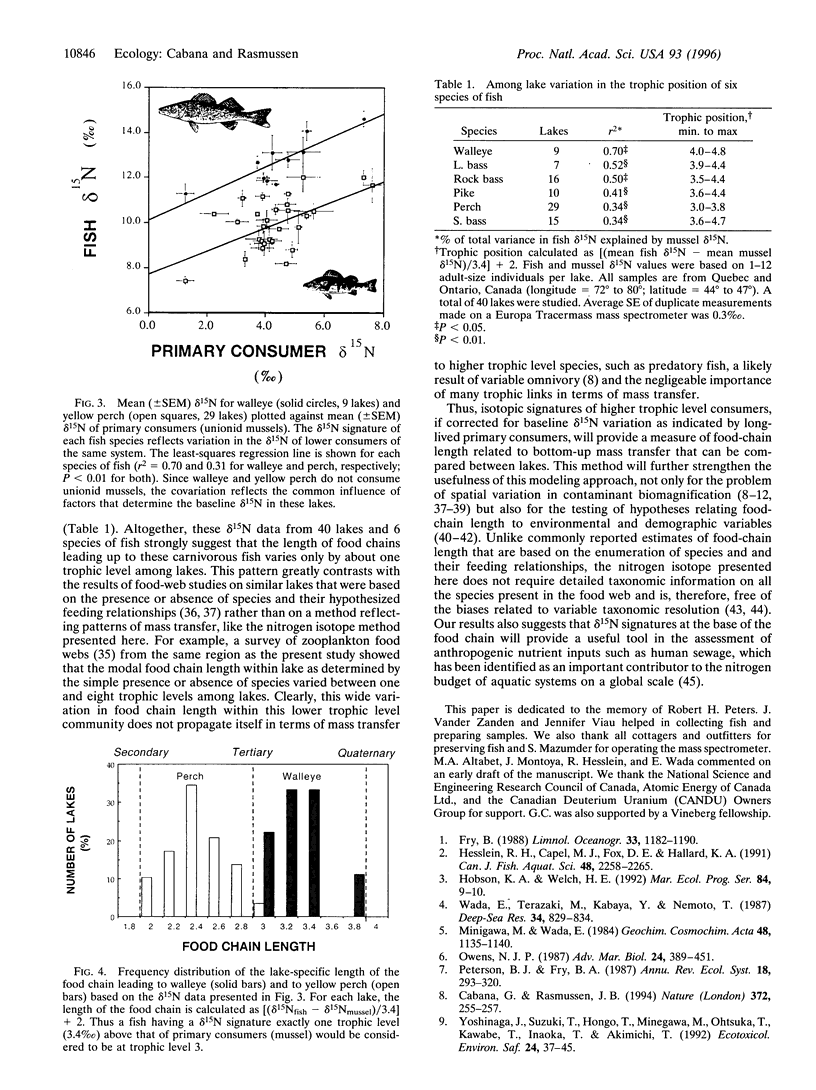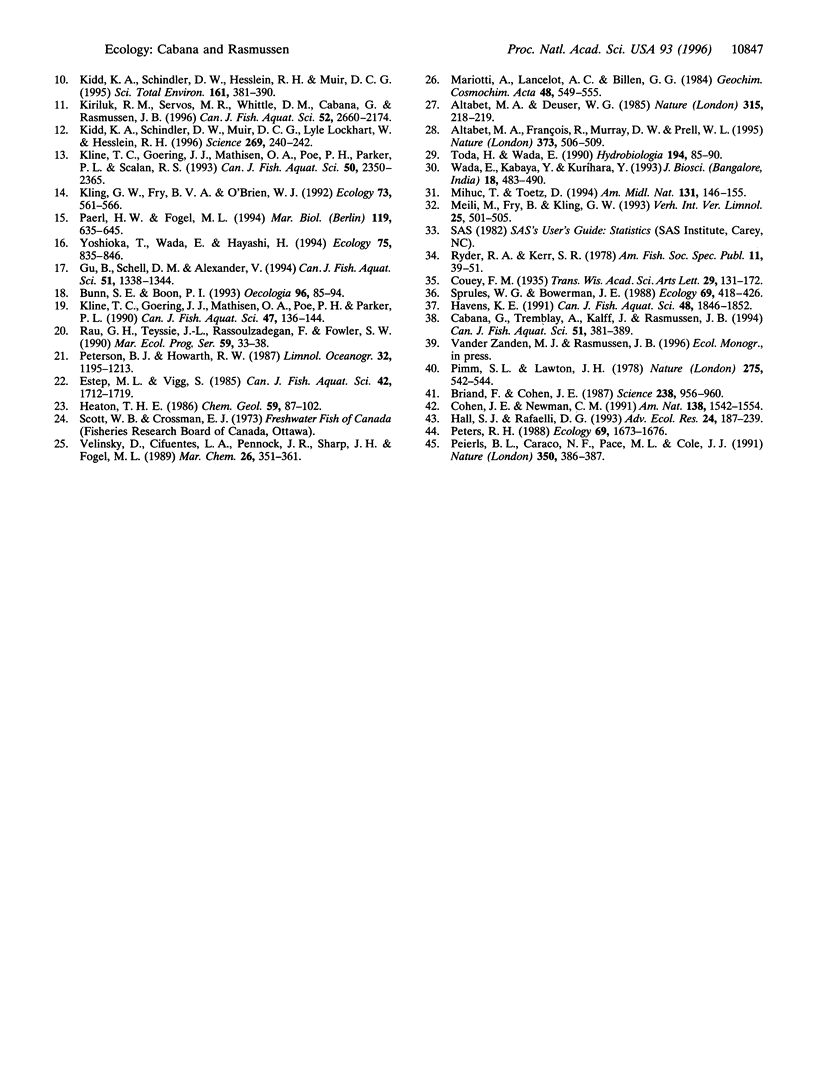Abstract
Recent studies have shown the utility of delta(15)N to model trophic structure and contaminant bioaccumulation in aquatic food webs. However, cross-system comparisons in delta(15)N can be complicated by differences in delta(15)N at the base of the food chain. Such baseline variation in delta(15)N is difficult to resolve using plankton because of the large temporal variability in the delta(15)N of small organisms that have fast nitrogen turnover. Comparisons using large primary consumers, which have stable tissue isotopic signatures because of their slower nitrogen turnover, show that delta(15)N increases markedly with the human population density in the lake watershed. This shift in delta(15)N likely reflects the high delta(15)N of human sewage. Correcting for this baseline variation in delta(15)N, we report that, contrary to expectations based on previous food-web analysis, the food chains leading up to fish varied by about only one trophic level among the 40 lakes studied. Our results also suggest that the delta(15)N signatures of nitrogen at the base of the food chain will provide a useful tool in the assessment of anthropogenic nutrient inputs.
Full text
PDF



Images in this article
Selected References
These references are in PubMed. This may not be the complete list of references from this article.
- Briand F., Cohen J. E. Environmental correlates of food chain length. Science. 1987 Nov 13;238(4829):956–960. doi: 10.1126/science.3672136. [DOI] [PubMed] [Google Scholar]
- Kidd K. A., Schindler D. W., Hesslein R. H., Muir D. C. Correlation between stable nitrogen isotope ratios and concentrations of organochlorines in biota from a freshwater food web. Sci Total Environ. 1995 Jan 15;160-161:381–390. doi: 10.1016/0048-9697(95)04371-7. [DOI] [PubMed] [Google Scholar]
- Kidd K. A., Schindler D. W., Muir D. C., Lockhart W. L., Hesslein R. H. High concentrations of toxaphene in fishes from a subarctic lake. Science. 1995 Jul 14;269(5221):240–242. doi: 10.1126/science.269.5221.240. [DOI] [PubMed] [Google Scholar]
- Kumanomido T., Fukunaga Y., Ando Y., Kamada M., Imagawa H., Wada R., Akiyama Y., Tanaka Y., Kobayashi M., Ogura N. Getah virus isolations from mosquitoes in an enzootic area in Japan. Nihon Juigaku Zasshi. 1986 Dec;48(6):1135–1140. doi: 10.1292/jvms1939.48.1135. [DOI] [PubMed] [Google Scholar]
- Yoshinaga J., Suzuki T., Hongo T., Minagawa M., Ohtsuka R., Kawabe T., Inaoka T., Akimichi T. Mercury concentration correlates with the nitrogen stable isotope ratio in the animal food of Papuans. Ecotoxicol Environ Saf. 1992 Aug;24(1):37–45. doi: 10.1016/0147-6513(92)90033-y. [DOI] [PubMed] [Google Scholar]



